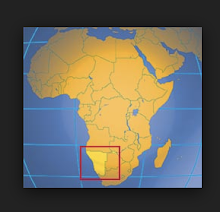
A long morning run out to the Plaat (beach) where I hiked in a bit and planted my butt on a bench whose brass plaque dedicates it to two young women who must have met a sudden and sad end on the same day, our anniversary, 1999. But the site of this little memorial couldn’t have been better chosen as the view all the way down the 10 miles of unspoiled white sand beach, with one lone fisherman his 12 -foot pole propped up by driftwood as he kicks back. Just below me, the waves are crashing hard and continuing their billion year cave construction project, the one with the floating deadline. Khaki clad tourists from Grootbos, the 5-star resort up on the hill above De Kelders are obediently tracing the well-practiced steps of their guide over the crags and into the caves. Klipgat. These caves were home to some of the earliest known hominids, your distant cousins and mine. I sit for an hour listening alternately to the waves’ beat and Joni Mitchell’s latest masterpiece. She would have approved.
Once home, Mimi arrives from her weight room workout at the same time and we shower and have a lunch out on the deck. Let’s go somewhere. OK. After a stop to get more phone minutes, a quality map of the Overberg at the Info office, and our official Gansbaai Library Cards, we are off to Pearly Bay, Elim and points east.
Trying out the XTrail’s legs abit. The little town of Pearly Bay has two little mini marts, back to back and neither sells alcohol. “You’ll have to go back to Gansbaai for that.” Oh well. A wonderful little beach, much the same as “our beach.” Rocky shoreline with loads of tidepools and a blue/green sea crested in blowing curtains of white foam. Some houses cling to the hillside, though it isn’t as steep or cliff-ish as De Kelders.

We move along on the gravel road that cuts east, perpendicular to the sea, into the hills toward Elim. After 20 km of farmlands, we enter the little dorp (town) of Elim, thatch houses run the length of both sides of Main Street. Tidy. Mostly white, but some taking the stylish leap to wilder choices in plaster paint. Rap music thumps from inside one. An ancient guy stares over the half-door of another. Little girls of four or five chase each other barefoot over lawns and across the street. A farming town, and not much more.
Turning back toward the sea, we pass through Wolversdorp?? Supposedly an arty town. Though there is a great sculpture garden surrounding one farmhouse, there seems to be no one else home. Onwards down to Die Dam? What is it? A town? A “dam” is not the same as a dam in the rest of the world. Here, a dam is the pond that is formed by making a dam…got it? Some of them are nothing short of reservoirs and lakes suitable for sailing and fishing, while some can almost be jumped across. Anyhow, Die Dam lies, according to our new map, right on a point on the coast. Sure enough, it does. And besides a sandy 2-car parking spot, there is nothing else, but gorgeous beach.
 A couple days later we drive to Danger Pointt., with its imposing lighthouse. Today it is also the site of the finish of a mountain bike race. We arrive too late to see any of the action, just the sweaty jerseyed guys hauling their bikes onto their racks and driving away.
A couple days later we drive to Danger Pointt., with its imposing lighthouse. Today it is also the site of the finish of a mountain bike race. We arrive too late to see any of the action, just the sweaty jerseyed guys hauling their bikes onto their racks and driving away.In 1852, the Birkenhead, a British sailing ship caught in the transition to steam, so it boasted both sails and steam-driven paddlewheels, was bound from England to the Eastern Cape of South Africa bringing supplies, troops and families to the soldiers fighting the Boers over control of this country. After refueling, it disembarked from Cape Town at 14:00 and at about 02:00 struck a rocky reef and was torn apart. There were more than 500 souls on board and only about 200 survived. The rule, “Women and children first!” was originated that dark summer's night, February 26, 1852. We learned that in those days very few people, even sailors, knew how to swim. It just wasn’t done. There were no pools. No YMCA. And, at least in northern Europe, the seas were just too damn cold for sane folks to contemplate entering them.
Anyhow, the infamous rock that dealt the blow is still visible from the lighthouse and “Birkenhead” is applied to all kinds of things in this area, from beers to guesthouses. Our buddy, Gerhard, is building a wooden replica of the ship from the original plans he got from Britain to a great degree of detail. When finished he will place it in the Information Building in Gansbaai.
Leaving the point, we spot a sign for, what else? The Birkenhead Tavern. We pop in for a cool one under the lapa (thatch). As we talk to our waitress, we find that she is a marathon runner just arrived from Cape Town and, like Mimi, wants to start a running club in Gansbaai. Cool. Running.

No comments:
Post a Comment